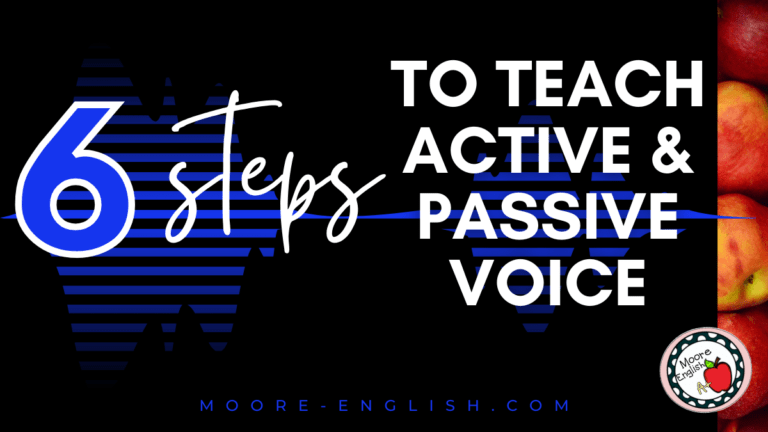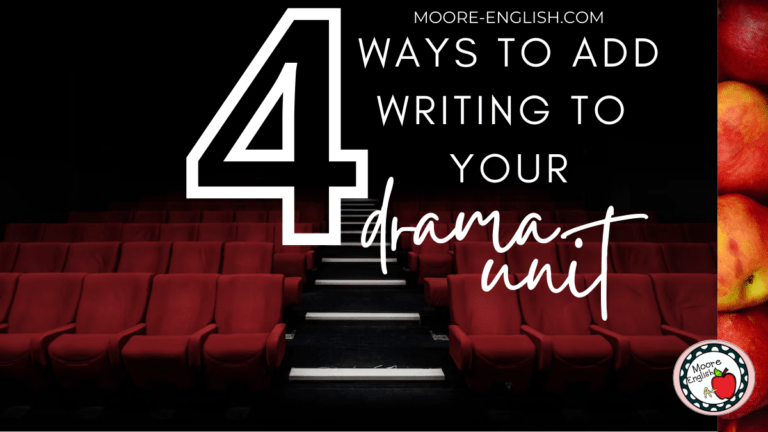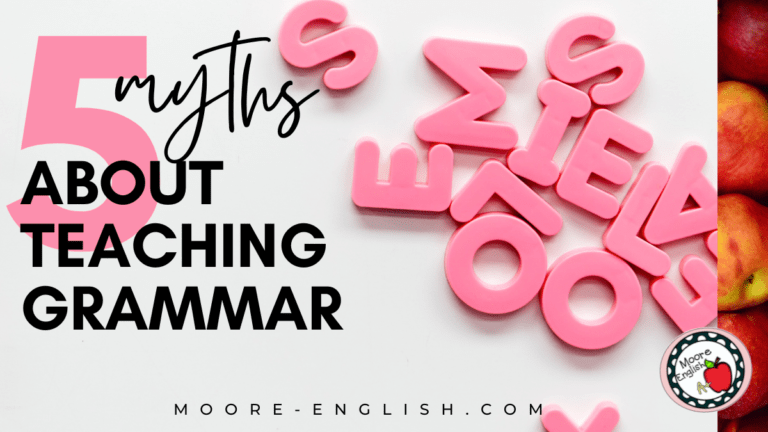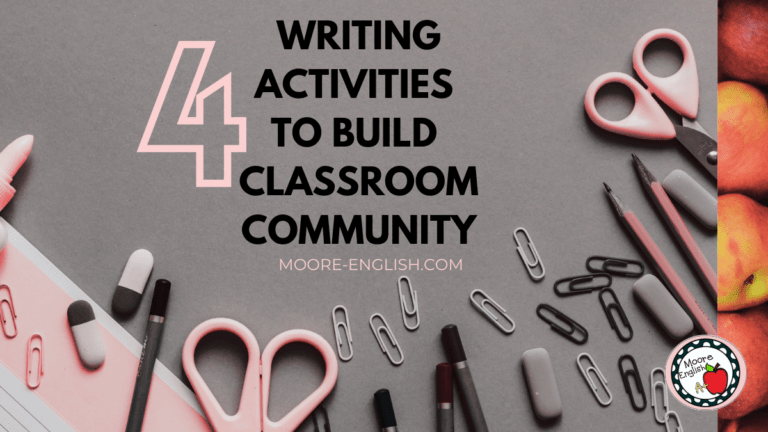Last week I shared my classroom reflections from the past school year. In addition to the insights I mentioned last week, this year also gave me a better appreciation for meaningful peer revision.
In the past, I have struggled with making peer revision meaningful for my students. When I did peer revisions, students would write empty comments or focus exclusively on grammar or on superficial mistakes. For this reason, I didn’t even go into the year planning on including peer revision. Snow days and curriculum writing made me short of class time, so I didn’t feel too badly about leaving peer revision out of my instruction.
But then, to my absolute surprise, my juniors asked for peer revision. Here’s what I learned from that experience:
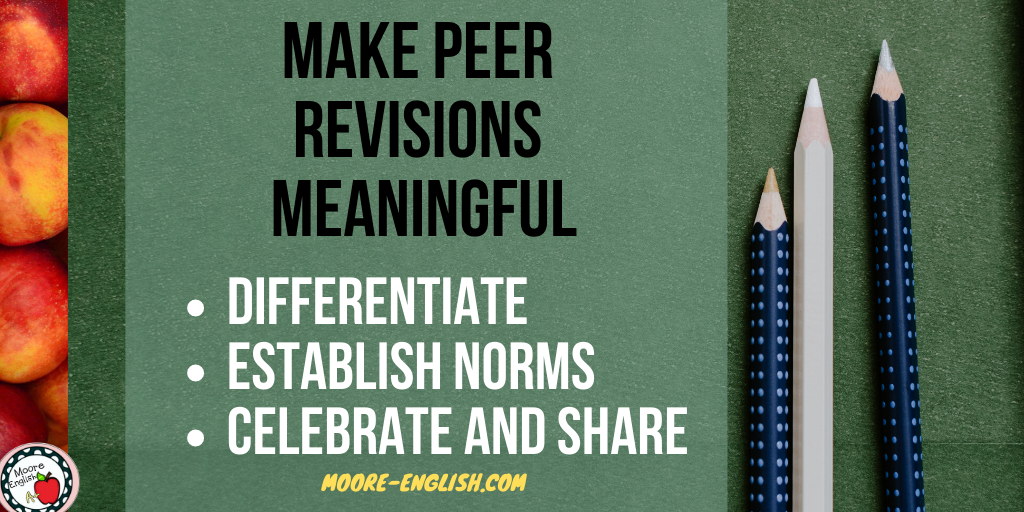
This post this post may contain affiliate links. Please read the Terms of Use.
Students Want Feedback
My peer revision adventure (like most good teaching) begins with my students. After revising our literary analysis papers, I asked students to provide some feedback on the unit. This is something I do at the end of most units. I just edit the questions so they match what we worked on during a given unit and/or what aspects of the unit I want to get feedback on. Here’s the Google Form I use.
Anyway, several students wished they could have had class time for peer revisions. I was shocked. Letting peers look at your work requires a lot of vulnerability, but my students were ready for feedback. I was most concerned about my introverts and a few painfully shy students, but everyone participated*. Edutopia also acknowledges the importance of involving students in the feedback process. Evaluation is a higher-level thinking skill, and the best way to build skills is through practice, so peer revision is a great way to help students practice evaluation.
Ultimately, what I found was that my students wanted feedback. They wanted to improve on their writing, and they were willing to seek feedback from one another. The students’ desire for feedback was a huge factor in why I decided to go ahead with peer revision.
*I want to throw in the caveat that we spent a lot of class time working in mixed groups long before we ever participated in peer revision. Because peer revision requires high levels of vulnerability, we had to work toward a place where students were comfortable taking cognitive risks.
Peer Revision and Editing are Not Created Equal
In the past, I have used the phrases “peer revision” and “peer editing” interchangeably, and that was a mistake. Revision and editing are related but different processes, and one is far more important and involved.
When I explain the writing process to my students, I use a cupcake metaphor. Research provides writers with ingredients. Outlining mixes those ingredients together. Drafting provides a structure like a cupcake wrapper. Revision is the “baking” process when everything comes together but also melts and moves around. This is where all the flavors really come together, so revision is super important. Editing, on the other hand, is the sprinkles. It makes sure the paper gives off a great first impression, but really, most cakes without sprinkles will still be edible even if they’re not the first ones purchased at the beginning of the day.
Sometimes I think I assume that students know the difference, but they don’t. So before I engaged my students in peer revisions, we established the difference between “revision” and “editing” and determined when we would do each activity. In fact, I instructed students NOT to provide any feedback on grammar during our first few cycles of peer revision.
Peer Revision Requires Norms
Another mistake I made in the past was assuming students knew how to behave during peer revision. Nope. All the “great job” comments on disorganized papers should have been an indication that students did not know what behaviors are most important during peer revision.
For this reason, we established peer revision norms. This was a huge game changer because establishing norms told students how they should behave both in giving and receiving feedback. For some students, this freed them to speak their mind and provide constructive comments. Norms helped other students step into a growth mindset. Since we established the norms as a class, when a student needed a redirect, I was able to simply point to our chart.
Peer Revision Routines
Here are 3 peer revision routines that worked well this year:
1. Revision Tickets: Before beginning peer revision, I went to each student’s rubric and marked an area of strength in blue highlighter and an area of concern in a green highlighter. As I did this, I made sure to explain, “Your draft shows that you are a rockstar with x but struggle with y. Would you help me be an expert in x tomorrow?” This kind of positive reinforcement gave students confidence while also putting them in a position for some cognitive vulnerability. The highlighting also allowed me to make sure we had lots of experts in high-need areas (analysis and elaboration) and not too many experts in low-need areas (transitions).
On revision day, the class set its norms, and I gave each student a revision ticket and explained that before class ended, each student needed to get 3 signatures on his or her ticket. A student could get signatures by seeking expert advice from a classmate or by acting as an expert for someone else. I did not put time limits or timers on students, and let them guide their own conversations. This meant that groups ebbed and flowed. As students worked together, their discussion blew me away!
2. Timed Feedback: When we were crunched for time, this was my preferred method of peer revision. Students pulled up their working draft on Google Docs and simply passed their Chromebook off to a classmate. They would read and comment, read and comment, read and comment for 3 minutes before passing the laptop again. Instead of scrolling up to the top, they would continue reading wherever the previous reader had left off.
3. Focused Feedback: This method of feedback requires the most work ahead of time, but it’s very rewarding. First, students use their rubrics to determine the area of their writing where they have the most opportunity to grow. Then, they choose a portion of their paper that showcases their concern. Then, students copy/paste their area of concern into a Collaborative Google Slide. I make the Slides ahead of time with one slide per student. The student copies and pastes in their area of concern and uses the speaker notes at the bottom to write, “I am most interested in growth in x area.”
Once every student has added to the Google Slides, students use the comments feature to provide feedback to one another. Sometimes I just have students start providing feedback on the first slide after their own. Other times I help students establish an area of expertise and suggest they seek out the slides that most need their insights. Still other times I have students partner up for this activity. One of my favorite parts of this peer revision activity is the way it focuses in on specific student skills.
How do you incorporate peer revision into your classroom? What are your suggestions for making peer revision meaningful? Let us know in the comments!

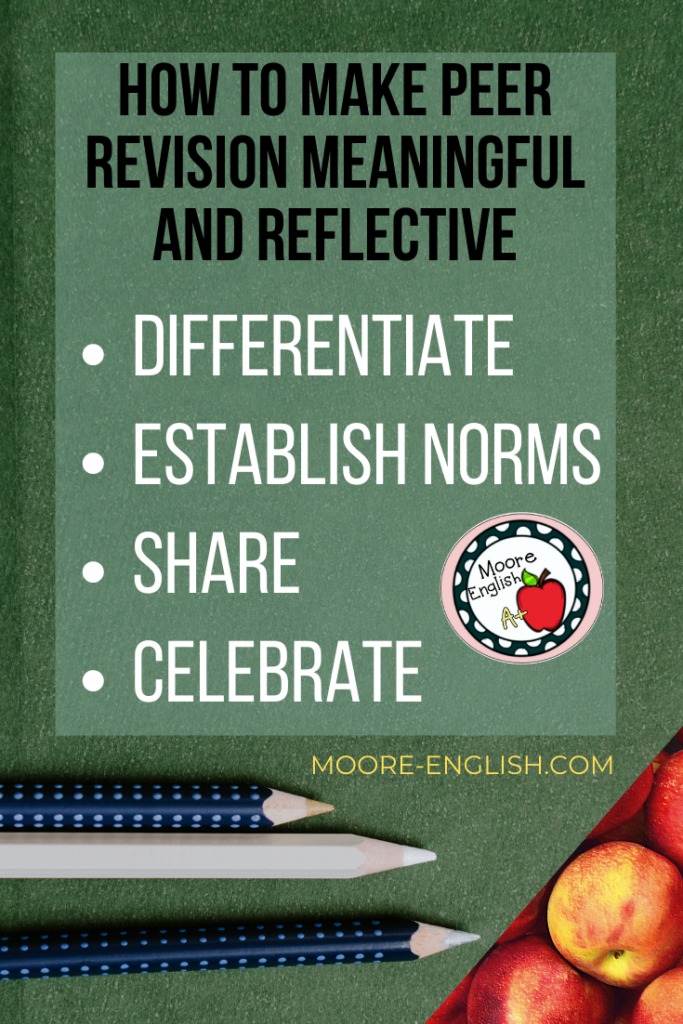
Photo by Kelly Sikkema on Unsplash


